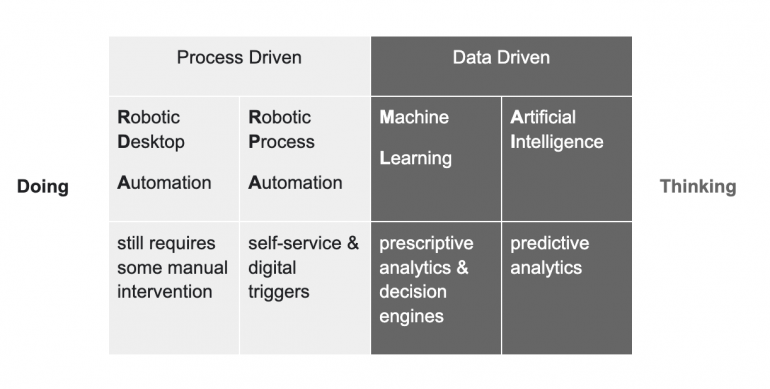
There is plenty of talk about artificial intelligence in the enterprise, but a lot of it is not very practical. That’s because enterprises aren’t equipped with an army of data scientists to build and train new AI models. And it’s not just the lack of qualified data scientists — AI breakthroughs require massive amounts of relevant, annotated data.
SEE: Metaverse cheat sheet: Everything you need to know (free PDF) (TechRepublic)
That doesn’t mean there is no place for AI in your enterprise innovation strategy. Savvy CIOs are using in-market models and APIs by commercial and industry leaders to solve well-defined use cases, bringing immediate, measurable value to the organization. Use this guide as a way to jumpstart practical AI initiatives.
What is AI?
AI is a term getting thrown at everything of late, including technology that definitely doesn’t qualify. It’s important not to let the hype distract you from the potential that AI can actually deliver. Think of AI as an umbrella of technologies that strive to simulate human intelligence processes.
What is the AI spectrum?
When it comes to applying AI at the enterprise, the lines between doing and thinking often get blurred. This progression is sometimes referred to as the AI spectrum (Figure A).
Figure A

While there is often value for an enterprise in implementing initiatives across the entire spectrum, generally speaking the further you move to the right along the scale, the greater the potential for a disruptive or transformative return on your investment.
AI use cases for enterprise users
There are a number of in-market AI models that map directly to common enterprise use cases.
Language services
Natural-language Understanding, natural-language Processing, text-to-speech and language translators are the technologies behind immensely popular digital assistants like Amazon’s Alexa and Apple’s Siri. These AI services are highly functional and widely available to handle all sorts of user interactions and voice driven interfaces. They can serve a number of enterprise use cases from support agent chatbots to live, multilingual transcription.
Personality insights
Personality and sentiment analysis models are able to predict customer behaviors, infer tone and even intent. Combined with usage analytics, these AI models serve as the basis for all manner of recommendation engines and hyper personalization strategies. While more frequently seen in consumer facing markets, the new more competitive workplace is putting a stronger focus than ever before on the employee experience, and sentiment analysis can give an organization a real-time pulse.
Smart documents
Smart documents are documents that are annotated such that the data within the document becomes automatically discoverable. The end result is self-indexing data allowing for complex queries and transformations. Enterprises are currently making use of smart documents to analyze everything from candidate applications to vendors to employee training records.
Visual recognition
Once the computing power and training data needed to do any meaningful visual recognition was beyond the means of most organizations. Thanks to the cloud, that has changed and there are a multitude of options available for a wide array of use cases at the enterprise.
Today, the same image recognition technology used to power the likes of self-driving cars can be tapped on the factory floor for many practical applications. Security, asset location and even barcode scanning is being done using the powerful cameras found in commercial smartphones and tablets relying on comparatively inexpensive software to increase efficiencies and safety in the workplace.
Content classifiers
Content classifiers use machine learning to analyze text as well as label and organize data into custom categories. Common use cases include spam filters and advanced accounting software that can scan receipts and categorize expenses. A number of organizations today are using AI to almost entirely automate the expense process for traveling employees right on their mobile devices.
Do you need to a data scientist to build AI apps?
Utilizing powerful off-the-shelf options, savvy organizations can jump-start their AI initiatives. You don’t have to build models from the ground up to put AI to real use in your organization, and you don’t need to be a data scientist to build AI-powered enterprise applications. The table below provides links to some of the leading players in this space. Since a large number of these products are SaaS and charge on a usage basis, there is little disadvantage to mixing and matching ensuring the best fit for each individual use case or project within your enterprise:
- Microsoft’s Azure Cognitive Services
- Amazon’s AWS Machine Learning Services
- Google’s Google Cloud AI for Developers
- IBM’s Watson
- The open source scikit-learn software
Is AI right for my organization?
When applied properly against vetted business cases, AI can result in substantial ROI and a strong competitive advantage for enterprises. When considering whether to pursue a potential AI solution consider the following:
- Confirm that your use case is not strictly an automation play.
- Verify there is an off-the-shelf AI solution with a large, well-trained model readily available.
- Make sure you have clear ROI/KPI benchmarks that map directly to tasks performed by humans today.
If you can answer yes to all three of the qualifying criteria, chances are you’ve found a good opportunity to inject AI into your enterprise portfolio.

